You’re tired of side hustles that promise big money but deliver pocket change. You’ve tried the online courses. The drop shipping. The affiliate marketing. And what do you have to show for it? Maybe $50 here and there.
Sarah Martinez felt the same way. She was a teacher in Austin, Texas, seeking something that could support her bills. Then she discovered kettle corn. One Saturday at the county fair, she made $6,000 in 12 hours.
This isn’t some get-rich-quick scheme. It’s a real business that requires work. However, if you’re willing to learn the system, you can build something that generates substantial income.
Here’s exactly how Sarah did it. And how can you copy her success?
The $6,000 Day: What Really Happened

Saturday, October 14th, started like any other day for Sarah. She arrived at the Travis County Fair at 6 AM to set up her kettle corn stand. By 6 PM, she had sold 1,200 bags of kettle corn at $5 each.
The math is simple: 1,200 bags × $5 = $6,000 in sales.
But sales aren’t profit. Here’s what she took home:
- Sales: $6,000
- Cost of ingredients: $480 (corn, oil, salt, sugar)
- Helper wages: $240 (2 helpers × $10/hour × 12 hours)
- Booth fee: $150
- Gas and supplies: $90
- Total expenses: $960
- Net profit: $5,040
That’s $420 per hour for Sarah’s work. Not bad for making popcorn.
But this wasn’t luck. This was the result of 18 months of learning what works and what doesn’t.
Why Most People Fail at Food Side Hustles

Before we get into how Sarah succeeded, let’s talk about why most people fail.
- They pick the wrong events. Not all fairs are created equal. A small church festival might bring in 500 people. A county fair brings in 15,000. Guess which one makes more money?
- They underprice their product. Sarah started selling bags for $3. She was barely breaking even. When she raised prices to $5, sales went up. People think a higher price means better quality.
- They can’t handle busy periods. When lines get long, amateur vendors panic. They run out of product. They move too slowly. Customers leave. Sarah learned to prepare for rush times.
They don’t understand their costs. Many vendors think they’re making money when they’re losing it. They forget about gas, permits, and their time.
Sarah made all these mistakes in her first year. She lost money at 3 out of her first 5 events. But she kept detailed records and learned from each failure.
How to Start Your Own Kettle Corn Business
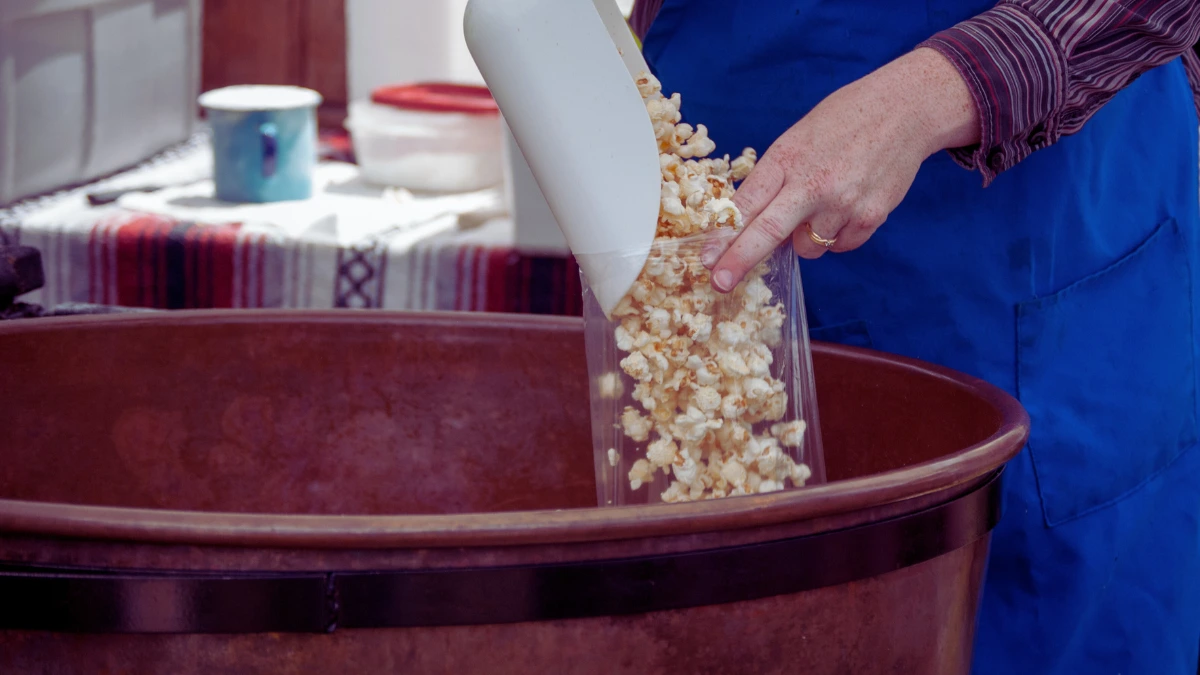
The good news? You don’t need much money to start. Sarah’s initial investment was $847. Here’s what you need:
Essential Equipment
Kettle corn machine: $200-400
A 6-ounce tabletop kettle will handle small events. For busy fairs, upgrade to a 12-ounce floor model.
Propane tank and regulator: $80
Most machines run on propane. Get a 20-pound tank and proper connections.
Basic supplies: $150
- Measuring cups and spoons
- Long-handled stirring spoon
- Heat-resistant gloves
- Fire extinguisher (required at most events)
Bags and packaging: $100 for startup inventory
Buy pre-printed kettle corn bags in bulk. Start with 1,000 small bags and 500 large bags.
Permits and licenses: $200-500
This varies by state and city. You’ll need:
- Business license
- Food handler’s permit
- Mobile vendor license
- Sales tax permit
Total startup cost: $730-1,230
Compare this to other businesses. A food truck costs $40,000-200,000. A restaurant costs $175,000-750,000. Kettle corn is cheap to start.
Getting Your Permits
Don’t let permits scare you. Yes, there’s paperwork. But it’s not that hard.
Start with your city’s business license office. Tell them you want to sell food at events. They’ll give you a list of what you need.
Most places require:
- Food safety certification (take a 4-hour online class)
- Business license ($50-200)
- Mobile food vendor permit ($100-300)
- Sales tax registration (usually free)
The health department will inspect your operation. They mainly care that you:
- Store food safely
- Keep equipment clean
- Have hand-washing stations
- Follow temperature guidelines
Pro tip: Call other kettle corn vendors in your area. Ask what permits they needed. Most people are happy to help newcomers.
Finding Events That Pay

This is where most people mess up. They think any event with people will work. Wrong.
Sarah tracks every event she works. Here’s what she learned:
High-Profit Events
County and state fairs: $2,000-6,000 per day
Fall festivals: $800-2,500 per day
Outdoor concerts: $1,200-3,000 per day
Sporting events: $600-1,800 per day
Low-Profit Events
Farmers’ markets: $200-600 per day
Church events: $150-400 per day
School fundraisers: $100-300 per day
Small town festivals: $200-500 per day
The difference? Attendance and demographics.
County fairs draw families ready to spend money on treats. They expect to pay fair prices for fair food. Farmers’ markets attract bargain hunters who want healthy, cheap options.
How to Find and Book Events
- Start with your state fair website. Most states list all their county fairs with contact info and dates.
- Check festival directories. Websites like FestivalNet.com list thousands of events by state and date.
- Drive around your area. Look for fairgrounds, parks, and venues that host events. Get their contact info.
- Network with other vendors. Food vendors often share information about good events.
When you contact event organizers:
- Ask about attendance numbers from last year
- Find out what other food vendors will be there
- Negotiate booth fees (many will come down if you ask)
- Get details about setup times and requirements
Book events 6-12 months in advance. The best events fill up fast.
The Production System That Handles Rush Times
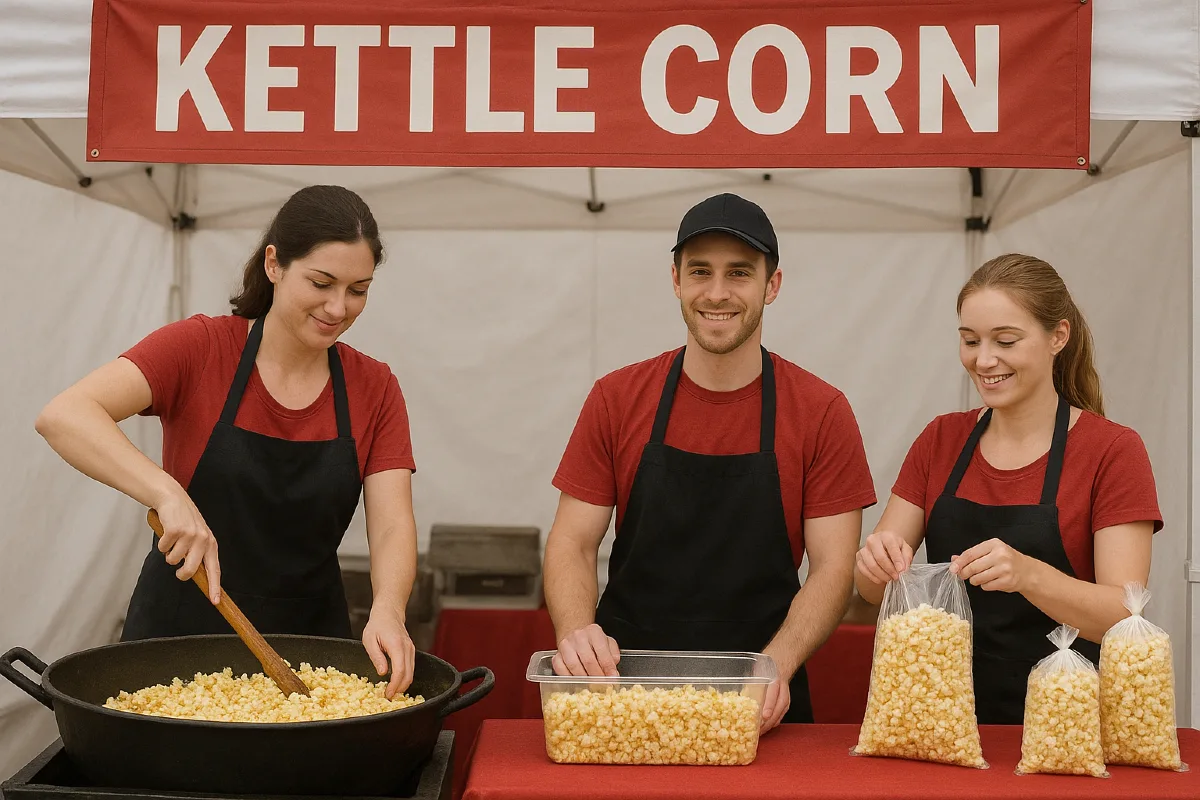
Sarah’s biggest breakthrough came when she figured out how to handle busy periods. On slow days, one person can make kettle corn. On busy days, you need a system.
The Three-Person System
Person 1 (Sarah): Runs the kettle. Makes the kettle corn from start to finish.
Person 2: Fills bags and handles money.
Person 3: Talks to customers and manages the line.
This system can produce 100 bags per hour during peak times.
The Recipe That Never Fails
Sarah tried dozens of recipes before finding one that works every time:
For a 6-ounce kettle:
- 1/4 cup vegetable oil
- 1/4 cup corn kernels
- 1/4 cup sugar
- 1/2 teaspoon salt
The process:
- Heat oil to 400°F
- Add 3 test kernels
- When test kernels pop, add remaining corn and sugar
- Cover and shake constantly
- When popping slows, remove from the heat
- Add salt and toss
- Let cool for 2 minutes before bagging
The whole process takes 4-5 minutes. Time it right, and you can have a new batch ready every 5 minutes.
Prep Work That Saves Time
- Pre-measure everything. Before the event, measure corn, oil, sugar, and salt into separate containers for each batch.
- Set up your station. Keep everything within arm’s reach. Oil on the left, corn in the middle, sugar on the right.
- Prepare your bags. Open bags and stack them near your filling station. Don’t wait for customers to do this.
- Train your helpers. Practice the system at home. Everyone should know their job.
Pricing That Maximizes Profit
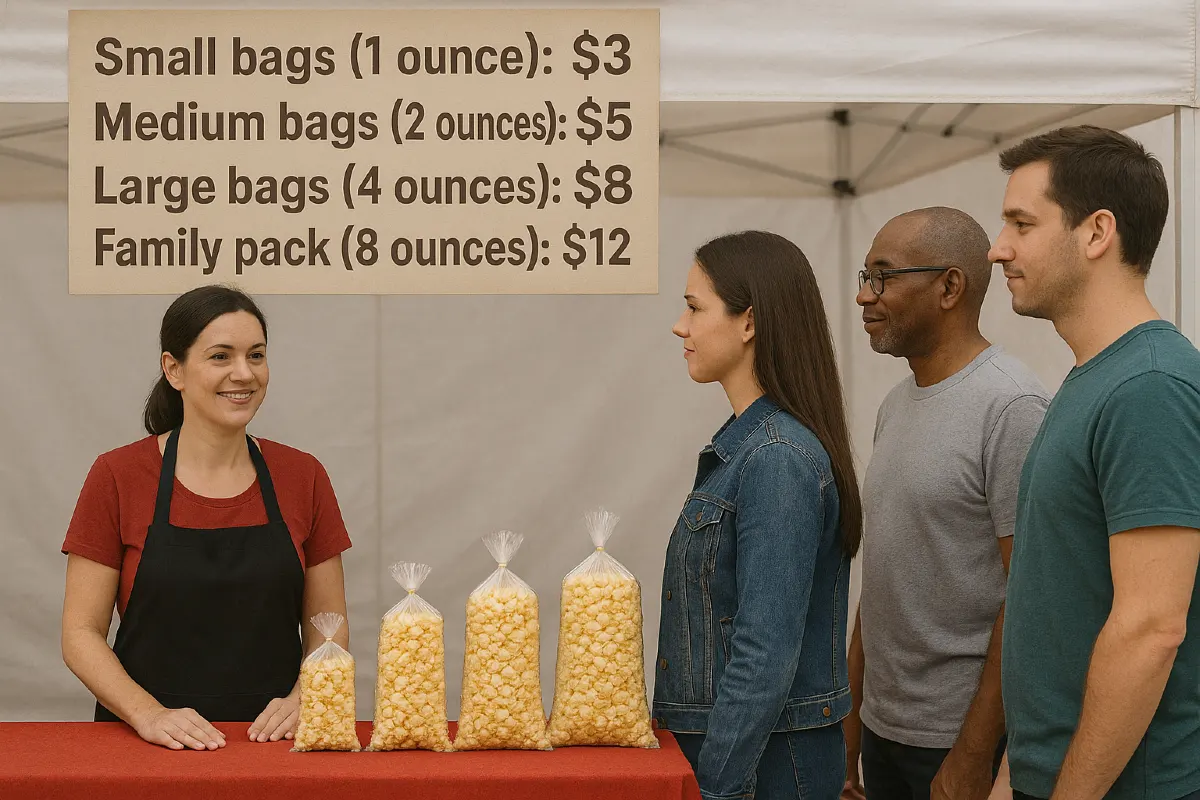
Sarah learned pricing the hard way. She started too low and gradually raised prices until she found the sweet spot.
Her Current Pricing Strategy
Small bags (1 ounce): $3
Medium bags (2 ounces): $5
Large bags (4 ounces): $8
Family pack (8 ounces): $12
The medium bag is her best seller. It has the highest profit margin and feels like a good value to customers.
Cost Breakdown per Medium Bag
Corn: $0.15
Oil: $0.10
Sugar: $0.08
Salt: $0.02
Bag: $0.05
Total cost: $0.40
Selling price: $5.00
Profit: $4.60
That’s a 920% markup. Yes, that sounds crazy. But remember, you’re not just selling corn. You’re selling the experience, convenience, and the fact that customers can’t make this at home.
When to Raise Prices
Sarah raises prices when:
- Lines get too long (high demand)
- It’s a premium event (wine festivals, upscale fairs)
- She’s the only kettle corn vendor
- Costs increase (rare, but it happens)
She never competes on price. If another vendor sells for less, she focuses on better quality and service.
Marketing That Brings Customers Back

Sarah doesn’t spend money on advertising. Instead, she uses these strategies:
Visual Appeal
Bright, clean equipment. People eat with their eyes first. Dirty equipment kills sales.
Clear pricing signs. Make it easy to order. List all sizes and prices in big, bold letters.
Let them smell it. The smell of kettle corn sells itself. Position your kettle where the wind carries the smell to foot traffic.
Social Media That Works
Instagram: Post photos from each event. Tag the location and use local hashtags.
Facebook: Join local event pages and community groups. Share your schedule.
TikTok: Short videos of the popping process get lots of views.
Sarah’s most popular Instagram post was a time-lapse video of making kettle corn. It got 12,000 views and brought customers to her next three events.
Building Repeat Customers
Remember faces. Sarah knows her regular customers by name and remembers their usual orders.
Loyalty punch cards. Buy 9 bags, get the 10th free. Simple but effective.
Email list. Collect emails at events. Send out your schedule monthly.
Quality consistency. Every bag should taste the same. Customers come back for the experience they remember.
Scaling Beyond Weekend Events
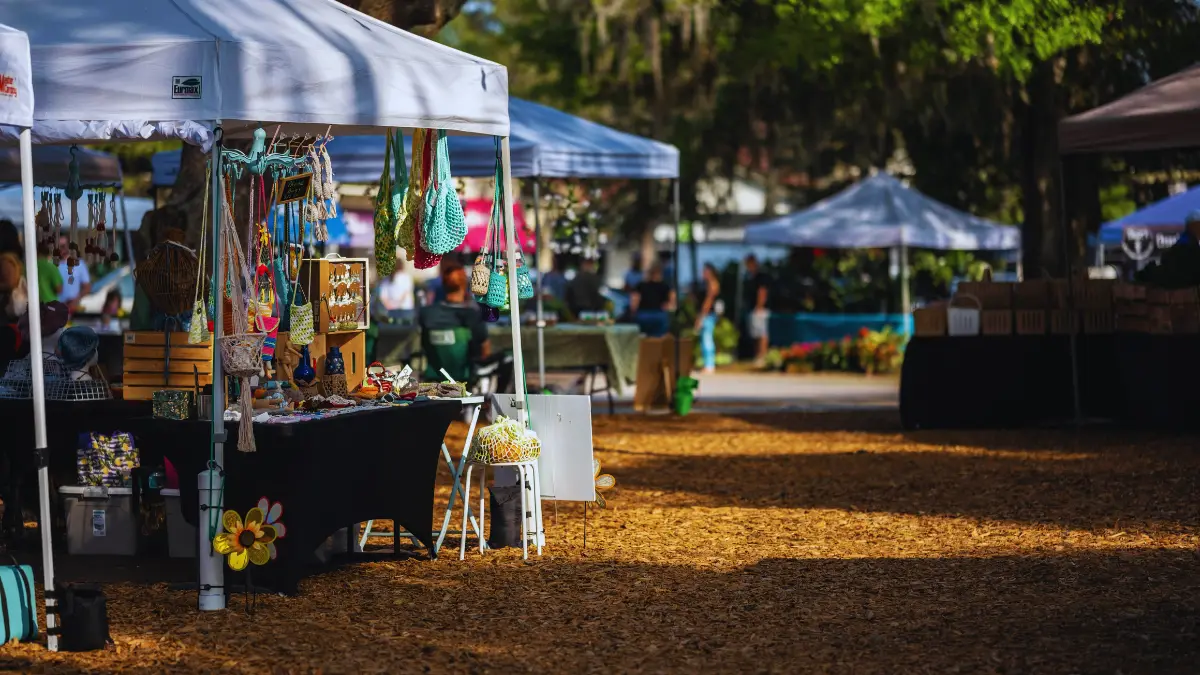
After two years of success, Sarah started expanding beyond fairs and festivals.
Corporate Catering
Office parties: $500-1,200 per event
Company picnics: $800-2,000 per event
Grand openings: $300-800 per event
Corporate events pay well and happen year-round. The downside? You need insurance and a professional presentation.
Holiday Sales
Christmas gift packages: $200-500 per day in December
Valentine’s Day: $300-600 per day
Halloween: $400-800 per day
Sarah packages kettle corn in holiday tins and sells them at higher margins. A $2 batch becomes a $15 gift.
Wholesale Opportunities
Local stores: $50-200 per week
Coffee shops: $30-100 per week
Gas stations: $40-150 per week
The profit per bag is lower, but the volume makes up for it. Plus, wholesale orders provide a steady income between events.
Mistakes That Cost Money

Sarah made expensive mistakes in her first year. Learn from her failures:
Running Out of Product
The mistake: Bringing 200 bags to an event that needed 500.
The cost: $1,500 in lost sales.
The lesson: Always bring more than you think you need. Leftover supplies keep for months.
Poor Location Choice
The mistake: Booking a spot far from foot traffic.
The cost: $400 in lost sales plus $150 booth fee.
The lesson: Visit events as a customer first. See where people naturally walk.
Underestimating Weather
The mistake: Not bringing a tent to an outdoor event.
The cost: $800 when it rained and she had to close early.
The lesson: Always have weather backup plans.
Inadequate Staffing
The mistake: Working a busy fair alone.
The cost: $1,200 in lost sales from long lines.
The lesson: Budget for help during peak times. The extra sales cover the wages.
Pricing Too Low
The mistake: Selling $5 bags for $3 to “beat the competition.”
The cost: $600 in lost profit over one weekend.
The lesson: Compete on quality, not price.
Your First 90 Days: The Action Plan

Ready to start? Here’s your step-by-step plan:
Days 1-30: Setup Phase
- Research permits and licenses in your area
- Buy basic equipment
- Take a food safety certification class
- Apply for a business license and permits
- Practice making kettle corn at home
Days 31-60: Market Research Phase
- Visit 3-5 local events as a customer
- Talk to other food vendors about their experiences
- Contact event organizers for upcoming dates
- Book your first 2-3 small events
- Order supplies and packaging
Days 61-90: Launch Phase
- Work your first events
- Track all expenses and sales
- Get customer feedback
- Adjust pricing and portions based on results
- Book events for the next 3 months
What to Expect Your First Year
Months 1-3: Learn the basics. Expect to break even or lose small amounts.
Months 4-6: Start making consistent profit. $200-500 per event.
Months 7-12: Master the system. $500-1,500 per event at good venues.
Sarah made $8,400 profit in her first year working 24 events. Year two, she made $31,200 working 36 events. Year three brought in $52,800.
The income grows as you:
- Learn which events pay best
- Improve your efficiency
- Build a customer base
- Expand to corporate clients
The Real Numbers: What You Can Expect

Let’s be honest about earnings. Not every day will be a $6,000 day. Here’s what realistic numbers look like:
Average Event Earnings
- Small events (church fairs, school events): $150-400 profit
- Medium events (farmers markets, local festivals): $300-800 profit
- Large events (county fairs, major festivals): $800-2,500 profit
- Premium events (state fairs, major concerts): $1,500-6,000 profit
Time Investment
- Small events: 6-8 hours, including setup and cleanup
- Large events: 10-14 hours for multi-day events
- Prep time: 2-3 hours before each event
- Travel time: Varies, but factor in drive time
Seasonal Patterns
- Spring (March-May): Moderate activity, $800-1,500 per month
- Summer (June-August): Peak season, $2,000-4,000 per month
- Fall (September-November): Busiest time, $3,000-6,000 per month
- Winter (December-February): Slow period, $400-1,200 per month
Most kettle corn vendors make 60-70% of their annual income during fall festival season.
Is This Right for You?
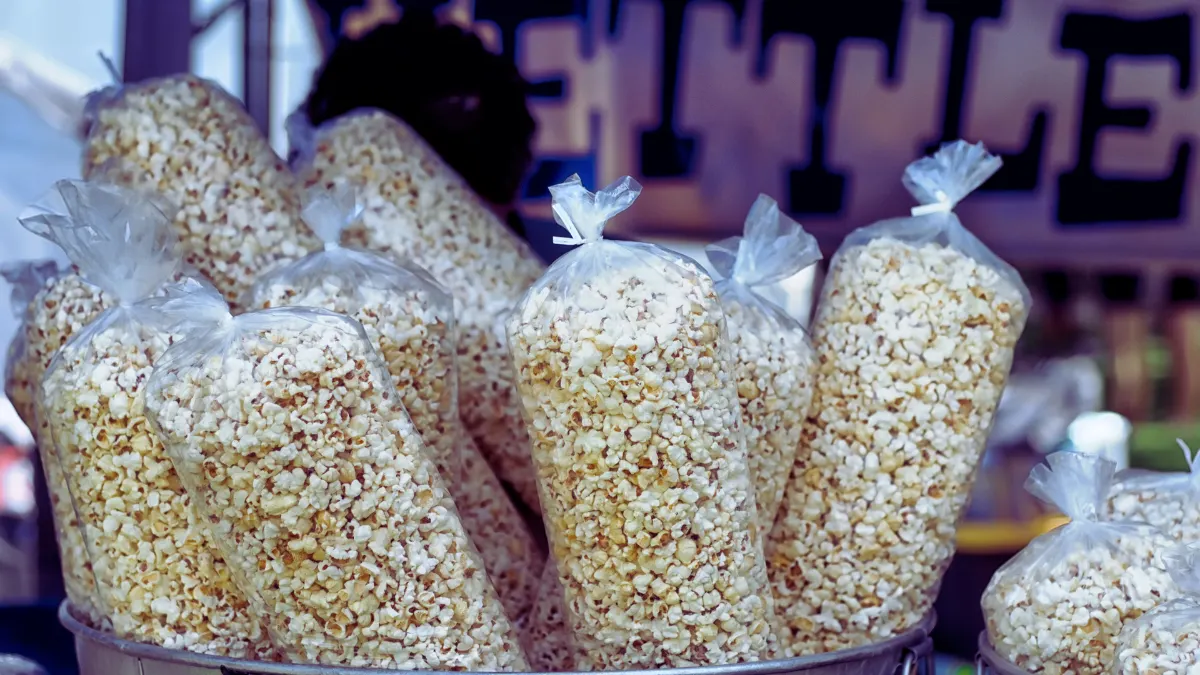
Kettle corn isn’t for everyone. Here’s who succeeds and who struggles:
You’ll Probably Succeed If You:
- Don’t mind working weekends
- Can handle physical work (standing for hours)
- Are comfortable talking to strangers
- Can work in all weather conditions
- Are willing to track expenses and plan ahead
You’ll Probably Struggle If You:
- Want passive income with no work
- Can’t handle rejection (some events will say no)
- Expect overnight success
- Don’t like dealing with permits and paperwork
- Want a guaranteed income every week
The truth? Most people who try this quit within six months. Not because it doesn’t work, but because they’re not prepared for the realities of running a business.
Getting Started This Weekend
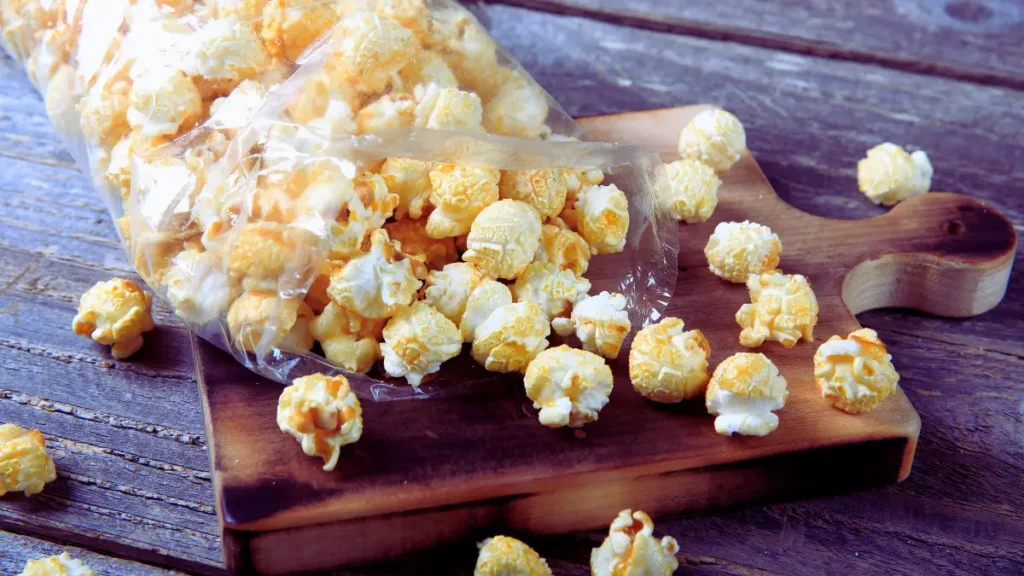
Want to test this before going all-in? Here’s how to start small:
The $200 Test
Buy a tabletop kettle corn machine for $200. Practice at home until you can make good kettle corn consistently. Then try these low-risk options:
- Garage sales: Set up in your driveway during neighborhood garage sale days.
- Little League games: Ask to set up outside the fence.
- Your kid’s school events: Many schools let parents sell food at games.
If you can make $100 profit in your first weekend, this business has potential for you.
The Commitment Test
Work on 5 small events in two months. Track everything:
- Hours worked
- Money spent
- Money earned
- What you liked and didn’t like
If you enjoy the work and see profit potential, invest in better equipment and start booking bigger events.
